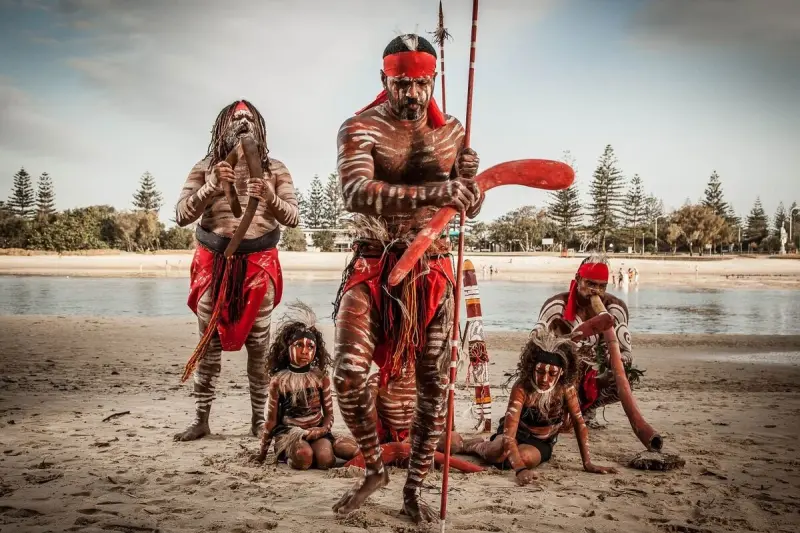
Exploring the Indigenous Culture of Australia: A Journey Through Time
Australia is home to one of the world’s oldest and most fascinating cultures: its Indigenous peoples. The Aboriginal and Torres Strait Islander communities have inhabited this vast land for over 65,000 years, shaping the country's history, art, traditions, and spiritual connection to the land. Their cultural practices, deeply rooted in the natural environment, offer a unique and enriching perspective on Australia’s past and present. Exploring the Indigenous culture of Australia is not just about learning history; it’s about understanding a deep, enduring relationship with the land and the rich traditions that have been passed down through generations.
The Importance of Dreamtime Stories
Central to the Indigenous Australian worldview is the concept of Dreamtime, a spiritual and mythological framework that explains the origins of the world, its people, and natural elements. Dreamtime stories are integral to the Indigenous cultures across Australia, passed down orally through generations. These stories often feature ancestral beings, creation myths, and the laws that govern life. The Dreamtime is not only a sacred concept but also a guide for how Indigenous people live, connecting them to the land, animals, and the natural cycles of life. The storytelling tradition is an art form, with elders sharing these ancient stories in ceremony, art, dance, and song, keeping the connection to their ancestors alive.
Connection to the Land
Indigenous Australians view the land as not just a physical space but as an ancestral being with a deep spiritual connection. This relationship is reflected in their traditional custodianship of the land, which includes practices of sustainable hunting, fishing, and land management. Indigenous Australians often describe themselves as "custodians" rather than "owners" of the land, as they believe they have a responsibility to care for it, passed down through generations. The relationship with the land is symbiotic; every rock, tree, and animal holds sacred significance in their spiritual beliefs. This connection is not just ecological, but also personal, with many Indigenous people identifying deeply with their ancestral territories.
Indigenous Art and Symbolism
Indigenous Australian art is one of the most vibrant and dynamic aspects of the culture. Through dot painting, bark painting, sculpture, and weaving, Indigenous artists convey stories of their ancestors, Dreamtime myths, and connections to the environment. Aboriginal art is not just decorative; it’s a way to communicate sacred knowledge and preserve traditions. The use of symbols, shapes, and patterns in Indigenous art often has significant meanings. For example, circles may represent waterholes, tracks of animals, or sacred sites, while lines may symbolize journeys or pathways. Each piece tells a unique story and serves as a medium through which the artist connects to their heritage.
Traditional Ceremonies and Rituals
Indigenous Australians have long practiced various ceremonies and rituals that mark important events in the cycle of life, such as initiation rites, birth, death, and marriage. These ceremonies are deeply spiritual, designed to honor ancestors, the natural world, and the Dreamtime. One of the most famous rituals is the corroboree, a gathering that combines dance, song, and storytelling. Through these rituals, participants are able to reinforce their cultural identity, pass down knowledge, and foster a sense of community and belonging. In recent years, these ancient practices have been revitalized as a way to reclaim cultural heritage and preserve the traditions of the past.
Indigenous Music and Dance
Music and dance are central to the cultural expression of Indigenous Australians. The didgeridoo, a traditional wind instrument made from eucalyptus wood, is one of the most iconic symbols of Aboriginal music. The sound of the didgeridoo, along with rhythmic clapping sticks, plays a central role in ceremonies and storytelling. Dance is also an integral part of Indigenous culture, with movements symbolizing animals, natural forces, or ancestral beings. Through dance, stories of the Dreamtime are acted out, preserving the cultural memory of the people.
The Contemporary Indigenous Experience
While the Indigenous cultures of Australia have been shaped by thousands of years of tradition, they have also adapted to contemporary life. Today, many Indigenous communities are reclaiming their cultural heritage and striving for greater recognition and rights within Australian society. Cultural festivals, art exhibitions, and educational programs are providing platforms for Indigenous voices to be heard, sharing their stories with a broader audience. At the same time, Indigenous Australians are facing significant challenges, including land rights, health disparities, and the preservation of their languages and traditions in a rapidly changing world.
Conclusion: A Rich Tapestry of Tradition and Resilience
Exploring the Indigenous culture of Australia offers a profound and enriching experience. It’s a journey that takes you deep into the heart of one of the world’s oldest cultures, where spirituality, art, and a connection to the land intertwine to create a unique cultural landscape. By understanding the traditions, stories, and values of Indigenous Australians, we not only gain insight into their history but also come to appreciate their resilience and ongoing contributions to Australian society. Whether through their art, music, or land stewardship, the Indigenous cultures of Australia continue to be a vital part of the country’s identity, and their stories are ones that deserve to be heard and celebrated.